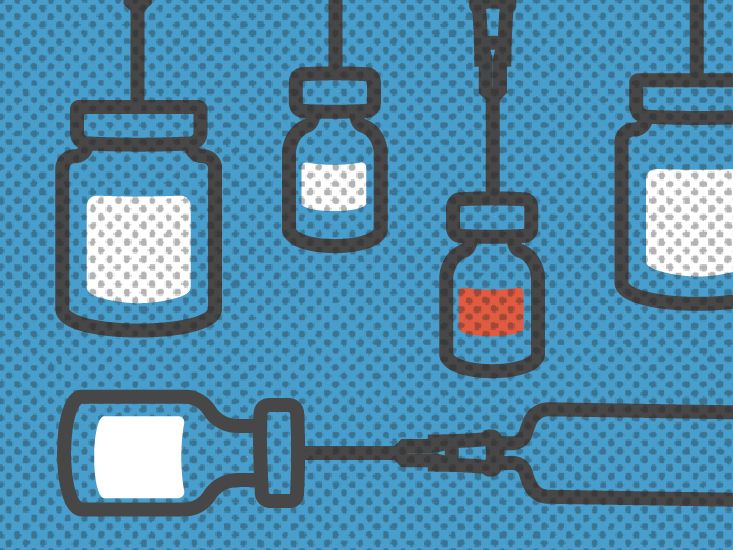Understanding Phlegm: A Crucial Part of Respiratory Health
Phlegm, also known as mucus, plays an important protective role in the respiratory system. While images of phlegm may not be the most pleasant to look at, phlegm serves vital functions. Learning what healthy and unhealthy phlegm looks like can provide insight into your respiratory wellbeing.
The Role of Phlegm in the Respiratory Tract
Phlegm is produced by goblet cells in the mucus membranes lining the trachea, bronchi, and bronchioles of the lungs. This mucus acts as a protective barrier for these airways.
Trapping Inhaled Irritants
Phlegm contains antibodies and antimicrobial enzymes that help trap dust, bacteria, viruses and other airborne particles you might inhale. This prevents these irritants from reaching and potentially damaging the delicate lung tissues.
Moistening Airways
The mucus also moistens the respiratory tract to prevent tissues from drying out. Tiny hair-like cilia help push the phlegm upward continuously so you can cough it out or swallow it.
Soothing Inflammation
Phlegm increases during infections and inflammation as the body produces more to coat and soothe irritated membranes. More mucus is made to help flush invading pathogens too.
What Does Healthy Phlegm Look Like?
Normal phlegm is clear to pale yellowish in color and thin to slightly thick in texture. You produce approximately 1 to 1.5 liters of phlegm per day. Most of this mucus gets swallowed unconsciously as it moves upwards from the lungs.
Clear to White Phlegm
Clear, nearly transparent phlegm indicates normal, healthy mucus production. Slightly whitish or cloudy mucus can result from mild nasal congestion or postnasal drip.
Yellowish Phlegm
When interspersed cells shed from the respiratory lining get caught in the mucus, phlegm can take on a yellowish hue. Darker yellow phlegm can indicate the bodys response to irritation or infection.
As long as yellow phlegm is thin and clear, it is not always a cause for concern. However, very thick or dark yellow phlegm warrants medical evaluation.
What Does Unhealthy Phlegm Look Like?
Take note if your phlegm deviates from normal color, thickness or quantity. This could signify an underlying respiratory illness or health condition requiring treatment. Key signs to watch for include:
Thick & Discolored Phlegm
Mucus that becomes extremely thick with opaque, cloudy coloration can indicate lung congestion from inflammation and excess cell debris. Blood may also cause spotting or streaks.
Greenish Phlegm
When immune cells rush to battle respiratory infections, the enzyme myeloperoxidase colors phlegm green. Pus from sinus infections or chest congestion thickens mucus to this greenish hue as well.
Greyish or Black Phlegm
Very dark grey, brown or black mucus most likely indicates old blood caused by irritation inside the respiratory tract. Sources could include heavy smoking, lung disease or potentially lung cancer.
Bloody Phlegm
Bright red blood mixed throughout phlegm is considered abnormal and requires prompt medical care. Severe infections, trauma, clotting issues or growths can damage lung tissue and blood vessels.
Increased Phlegm Volume
Producing copious amounts of phlegm daily rather than usual amounts warrants evaluation too. This hypersecretion signifies inflammatory illnesses like chronic bronchitis, cystic fibrosis or respiratory allergies.
When to Seek Help for Unexplained Phlegm Changes
While temporary phlegm changes from colds or allergies are normal, unexplained mucus changes not linked to short-term illnesses require medical assessment. Seek help if you notice:
Persistent Increased Thickness/Discoloration
Mucus that remains thick, opaque and discolored for weeks rather than improving with rest and hydration may indicate underlying infection or lung disease.
Lasting Bloody Phlegm
Any bloody mucus lasting over a week without explanation needs immediate evaluation to identify the source and necessary treatment.
Copious Volumes of Phlegm
Producing excessive phlegm daily for more than 2 weeks continuously should be evaluated, especially alongside thickness and discoloration.
Keep your doctor informed anytime you notice unexplained, prolonged alterations in your phlegm. Connecting changes to potential causes guides accurate diagnosis and treatment.
Improving Respiratory Health Through Phlegm Awareness
Paying attention to your mucus can provide vital clues into the state of your respiratory wellbeing. While phlegm may not look visually appealing, recognizing whats normal versus abnormal for you allows timely treatment of infection, inflammation or disease.
Discuss any respiratory or phlegm changes that concern you with your doctor, especially if excessive thickness, discoloration, blood or increased volumes persist. Together you can identify root causes and appropriate management plans.
FAQs
What does healthy phlegm look like?
Healthy phlegm is typically clear, white, or pale yellow. It should be thin to moderately thick and easy to cough up. You make about 1-1.5 liters daily.
What phlegm changes need medical evaluation?
See your doctor if phlegm becomes very thick, dark in color, bloody, or you produce much more than usual for over 2 weeks without explanation from a temporary illness.
Can yellow phlegm be normal?
Yes, mild yellowing from cells shed in the airways can happen normally. But very thick or dark yellow phlegm could mean illness - discuss changes with your doctor.
Why does the body produce more phlegm sometimes?
The body makes more mucus during respiratory infections and inflammation to trap germs, soothe membranes, and help cilia clear irritants faster through coughing or swallowing.
Disclaimer: This article is for informational purposes only and does not constitute medical advice. Always consult with a healthcare professional before starting any new treatment regimen.
Related Coverage
FluMist side effects are usually mild—runny nose, sore throat, or low fever—and fade within days. Get tips to manage them safely....
Learn about the science-backed benefits of Nature's Truth black elderberry extract for immune health. Discover research on elderberry for colds/flu and get expert tips for usage....
Wondering if you can take mucinex and ibuprofen together when you have a nasty cold? Learn how combining them works to target different symptoms for faster relief....
Take this hand hygiene quiz to see if you know all the right handwashing techniques to kill germs. Learn effective scrub time, soap use, rinsing, drying steps....
Compare Theraflu and Alka-Seltzer Plus ingredients, liquid vs tablets, appropriate products for specific cold/flu symptoms to determine the best OTC relief choice....
Compare Alka-Seltzer Plus and DayQuil cold and flu products by ingredients, formats, symptom relief abilities and more to determine which OTC medication is best for your needs....
Is it safe to use Flonase and NyQuil together for a stuffy nose? Get the facts on combining these medications and learn other fast ways to relieve congestion....
Mucinex and Benadryl can generally be used together for colds but may cause increased drowsiness. Natural remedies like fluids and steam may also provide relief....
Soothe sinus pain and pressure with effective natural remedies like steam, salt therapy, herbs, and diet changes. Natural treatments provide safe sinusitis relief....
Learn how over-the-counter medications like Advil and Nyquil work to relieve common cold symptoms. Discover key differences between these options to help treat sore throats, congestion, coughs, and more....






